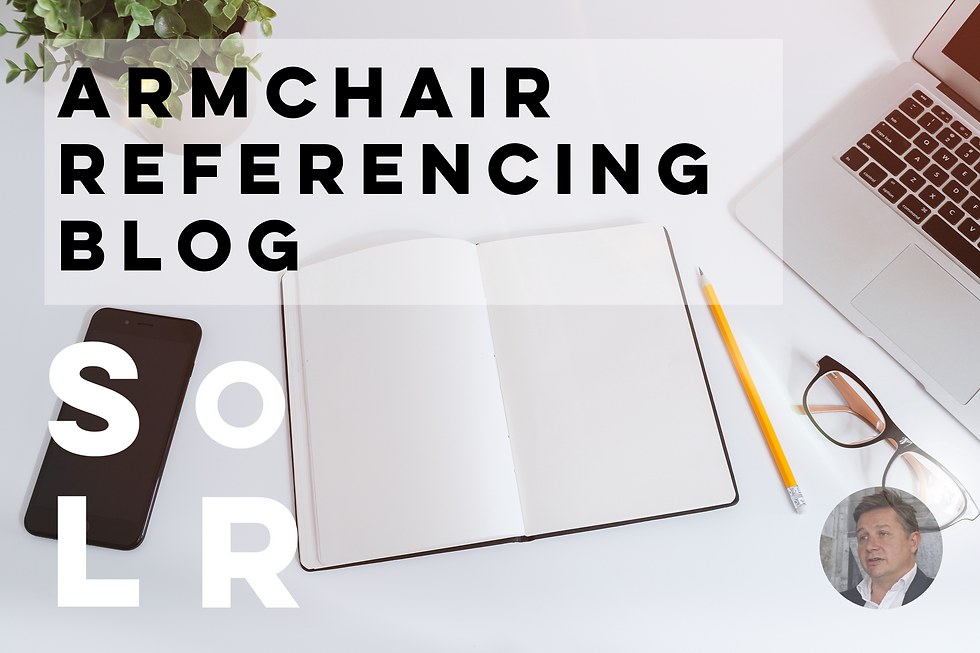Armchair land referencing #10
- Ashley Parry Jones
- Feb 17, 2023
- 3 min read

Last time I asked if the ceremonial Isle of Wight becomes larger than the historic country of Rutland at every low tide. The answer is no. This is impossible because, despite the fact that there are only 2km² between the two and that the tide easily reveals more than that area of land around the Isle of Wight every low tide, the island’s boundary – and all administrative boundaries – are measured at low tide (Mean Low Water). This means the land revealed is already included in the calculation and the area therefore doesn’t change. Rutland is always a tiny bit bigger than the Isle of Wight – but as the island isn’t an historic county, Rutland retains its claim of being the smallest in England.
Boundaries of bodies of water can be tricky. In this article we are going to examine some issues and legal conventions that dictate the boundaries land referencers need to identify during their work. As so often with these matters, the choice of which convention to follow depends on a few things. Generally, the boundary between land holdings either side of a non-tidal river runs down the centre. This means that rivers belong to whoever owns the land along each bank up to the midway line along the centre of the river (note, not the ‘thalweg’, the deepest part of the channel). This ownership of the riverbed and below is sometime referred to as the ‘riparian’ ownership interest and there may be other riparian interests associated with fishing, water extraction, navigation, bathing, etc., either individually or in common with others. Riparian rights often have little value but are sometimes very valuable with the best Scottish salmon beat costing £millions. It is always important that these rights are recorded. The ownership does not extend to the water flowing in the river, which is usually managed by a local water authority for purposes of irrigation, industry, water supply or even turning mills (for hybrid Bills Standing Order 16 still requires the identification of mills 32kms downstream if powers are sought to divert a watercourse or extract water). So, the principle of ownership of non-tidal rivers is much the same as that for adopted highways, as discussed a few weeks ago. There is one major difference though, albeit a rare one: highways don’t move, whereas rivers do change course. This is known as the ‘doctrine of accretion and diluvion’ (deposit and erosion) which recognizes that the course of a river alters over time and accepts that so must the boundary. However, the doctrine only applies to gradual, almost imperceptible seasonal movements and doesn’t hold true for sudden changes; natural or man-made.

The Environment Agency has duties of protection of non-tidal rivers so by convention land referencers list them as an occupier in books of reference to ensure they receive an appropriate notice. For tidal rivers the convention is different. Tidal waters usually belong to the Crown, and this includes the river right up to the point where it stops being tidal (the mean high water tidal extent). This image shows the boundary marker I found hidden in some undergrowth at Teddington that marks the exact point where the Thames starts / stops being tidal. It is at this point that riparian interests cease. The 26 km / 16 mile stretch of the Thames between Teddington and the sea (sometimes referred to as ‘The Tideway’ – hence the Tideway project’s name) is managed by the Port of London Authority (PLA). Most UK rivers with ports have such an authority managing them and land referencing would identify them as occupiers in books of reference to ensure they receive the correct notifications regarding their navigational and flood protection duties, etc. However, these authorities might also have ownership rights too. The transfer from Crown to port authority is seldom straightforward. The Thames for instance, as it passes through London, is a patchwork of seemingly random ownerships between the Crown and the Port of London Authority (the PLA) - as we can see from the past books of reference for Tideway, Thameslink, Silvertown Tunnel, CTRL (HS1) and Crossrail.
Matters are complicated further by other rights extending into a river. I include an image here of a houseboat moored on the Thames at Battersea. For next time please think about what interests might be associated with this site.

This article is written by Ashley Parry Jones, Director – Planning, WSP. The opinions expressed are those of the author and do not purport to reflect the opinions or views of WSP or SoLR or its members. The information provided does not and is not intended to constitute legal advice and instead is offered for general purposes only. It does not constitute the most up to date legal information. Any links and references provided are for the readers’ convenience only and do not constitute a recommendation of those sources.

Comments